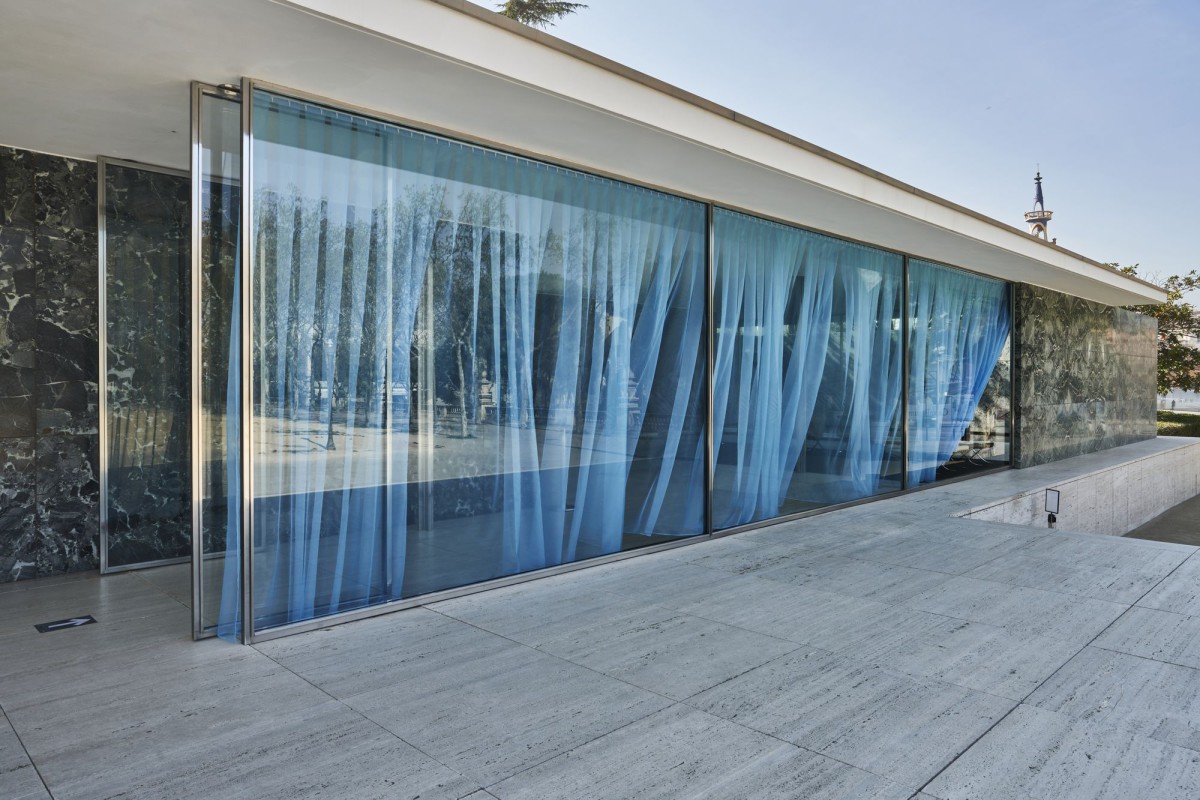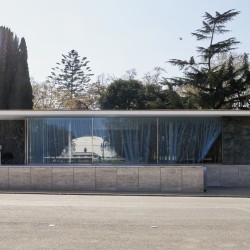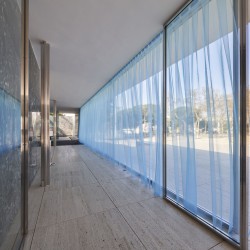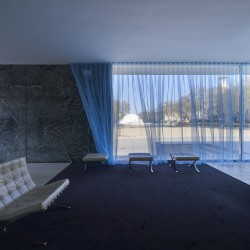photos: Miquel Coll . + MACBA
Fundació Mies van der Rohe presents, from 25 March to 11 April 2021, “Untitled” (Loverboy) by Felix Gonzalez-Torres, a site-specific piece at the Mies van der Rohe Pavilion shown as part of the retrospective exhibition at MACBA of the work Politics of Relationship by Felix Gonzalez-Torres.
The intentionally cryptic subtlety of the work now presented in the Pavilion underlines the impact of the materialities of each surface. The curtain of dense, heavy, falling colour, which together with the onyx and the carpet adds the third colour of the German flag, becomes a very light, undulating, light blue tulle that flutters beyond the end of the window.
The adaptation of this piece to the architectural space and the poetic sensuality it introduces opens our gaze not only to the work presented but also to new rereadings of the Pavilion.
In the work of Gonzalez-Torres – American, born in Guáimaro (Cuba) in 1957 and deceased in Miami (United States) in 1996 – always in transit between contexts and identities, blue often represents love or beauty, but also fear. The fact of developing a subtle language about the queer condition, which prioritises romanticism and reformulates the language of minimalism and conceptualism as vehicles for affective content, is one of his main contributions to his aesthetic canon.
This installation, consisting of translucent fabric curtains that tint the light of the Mies van der Rohe Pavilion blue, introduces a new sensuality to the architectural space. It is a special work because it is the only one that is assigned a new inventory number each time it is produced. Even though the author is no longer present, the piece continues to evolve. The overall exhibition curated by Tanya Barson offers a political reading of Gonzalez-Torres’ work in relation to postcolonial discourse and the anti-fascist fight, mainly in Spain and the Americas, their shared histories and commonalities, and how they impact on a personal level through issues of memory, authority, freedom and national identity. In the case of the installation in the Pavilion it also addresses the formative importance of Gonzalez-Torres’ work in queer aesthetics. In the exhibition, all these aspects are related, for example through the dialogue between militarism and homoeroticism, or through Gonzalez-Torres’ engagement with the idea of the monument, which can be related to narratives of race, colonialism and fascism.
_














